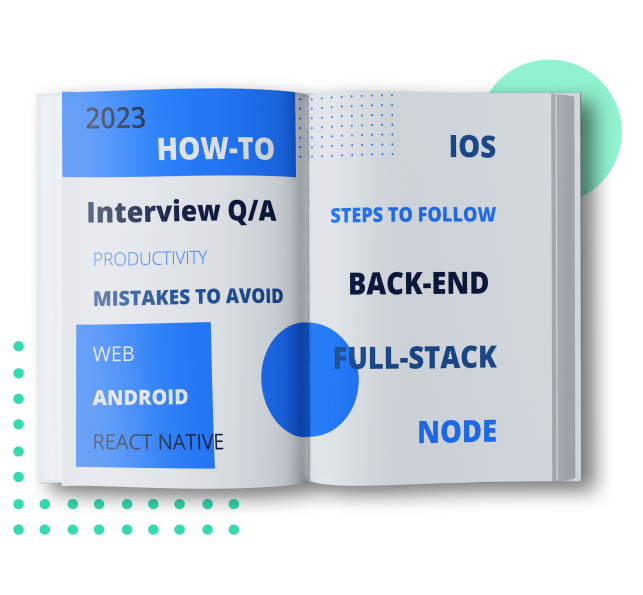Previously we defined differences between OnShore, NearShore, and OffShore Software Development. In this post, we’ll focus on how to go ahead with hiring Offshore developers and what to consider in the process.
Before we start, let’s figure out what an offshore software development team is.
It is a developer or a team of developers located far abroad.
Distinguishing features of such a collaboration format might include:
- Considerable time zone difference;
- Different cultural heritage and mentality;
- Greater variety of available candidates;
- Lower hourly rates.
It is important to understand what team can be considered offshore for you. Traditionally, Eastern Europe-based teams are offshore for the USA, while teams from Latin America are nearshore. In the case of Western Europe, developers from Latin America are certainly offshore, while teams from Eastern Europe are nearshore.
Therefore, any region can become offshore depending on the customer’s location. This article will be structured with this in mind.
What region to choose for offshore software development
The main objective of offshoring is to optimize costs or scale a development team when the local labor market limits the company. In this connection, the regions most frequently preferred for offshore software development have a great number of developers at low hourly rates: Central Europe, Asia, Latin America, and Africa.
Central Europe
Region industry. Central Europe boasts a thriving and dynamic tech industry with a strong focus on innovation and technological advancement. Countries within this region have established themselves as key players in software development, offering a robust ecosystem of skilled professionals, cutting-edge technologies, and supportive infrastructure. This industry maturity and expertise make Central Europe an attractive destination for offshore software development projects.
Cultural context. Central Europe is known for its emphasis on high-quality workmanship, professionalism, and attention to detail. Developers from countries like Poland, Slovakia, and Romania are known for their dedication to excellence and their reputation for delivering high-quality work. They prioritize meeting deadlines, maintaining clear communication with clients, and fostering smooth collaboration. This cultural compatibility with Western businesses leads to harmonious working relationships built on trust, mutual respect, and long-term partnerships.
Countries: Poland, Czech Republic, Hungary, Slovakia, Germany, Switzerland, Austria, etc.
Review
Ideal for: Spectrum of projects, from basic software tasks to intricate AI and machine learning initiatives.
Asia
Region Industry. India is an Asian leader in offshore development. Tholons Releases 2021 Global Innovation Index lists it in the second position of top digital nations after the USA. Millions of developers are available in the Indian labor market. The fusion of a large competitive environment and low living standards resulted in one more peculiarity – low rates. The combination of these factors makes India one of the most attractive regions for offshore development. However, the level of education is still very low, and India is in the 137th position among other countries, according to Education Index 2020. The region is primarily attractive to offshore low-skilled labor.
There is a similar situation in neighboring countries like the Philippines and Pakistan for instance. China is primarily focused on the domestic market due to the mentality and poor knowledge of English in the population.
Cultural context. Asia is referred to as a high-context culture. Such features as emotionality, and complaisance make communication quite complicated. Vague and ambiguous wording and avoidance of directly saying ‘no’ to a customer are common in negotiations.
Countries: India, China, Philippines, Bangladesh, Vietnam, Malaysia, Indonesia, Pakistan, Shi-Lanka, etc.
Review
Ideal for simple and routine tasks and projects requiring fast scaling. Projects requiring cutting costs.
Latin America
Region industry. The IT industry in Latin America is growing fast. The Internet has become available to the general public, and 78% of the population uses it nowadays. The number of people engaged in the IT sphere is growing, and Brazil has only about 2 million. The high demand for software development coming from the USA is one of the determining factors for fast growth. Attention from companies in other countries to the Latin American region is also increasing.
It is worth considering the shortage in the technology stack. Coursera Global Skills Index 2020 research states that Latin America is in the last position among world IT regions in terms of mastering Computer Networking, Databases, Human-Computer Interaction, Software Engineering, Security Engineering, etc. The problem is locally understood and in Colombia, for instance, the government covers up to 80% of educational costs for students of IT professions. However, the problem is still real.
Cultural context. Latin America is considered to have a high-context culture. Several activities can be performed simultaneously, and quite often deadlines are missed. Premises and commitments are covert, tone of voice, gestures, and pauses made within the conversion matter.
Countries: Mexico, Brazil, Argentina, Chile, Colombia, Costa Rica, Panama, Peru, etc.
Ideal for: Projects from North America where communication during the day is important, and customers are willing to pay extra for it.
Africa
Region industry. Recently, Africa appeared on the map of offshore development. The active growth of the IT sector is primarily happening in South Africa. The country’s government invests a lot in the development of the IT sector. Foreign partners can take advantage of tax privileges. In addition, a currency exchange rate (USD/ZAR 1:14) helps to reduce costs for the external development team. A high level of English being one of the state languages is another benefit that attracts foreign companies.
The technological development of other African countries is still in progress however experienced developers can be already hired in Egypt and Kenya. French customers often work with Morocco and Tunisia due to their good knowledge of French.
Cultural context. Africa is also a culture of high context. Communicating, keep in mind that developers might not always clearly answer your questions and suggest their ideas.
Countries: South Africa, Kenya, Nigeria, Egypt, Morocco, Tunisia, etc.
Ideal for small- and middle-size projects with low complexity. Customers that need a high level of English and French.
Offshore regions pivot table
Where to find offshore developers
After choosing the region, it’s time to understand where to find offshore software developers.
First and foremost, define the hiring format that suits you best. There are three options:
- InHouse Developer;
- Freelance Developer;
- Dedicated (On-demand) Developer.

The format determines where you are going to search for offshore software developers.
InHouse Developer. Opting for in-house hiring means undertaking the task of sourcing developers independently. While platforms like LinkedIn can serve as a primary resource for this approach, allowing you to filter candidates based on various criteria such as geographical location, work experience, technology expertise, and more, it also requires significant time and effort to review profiles, conduct interviews, and negotiate terms.
On the other hand, leveraging talent tech recruiting services streamlines the entire hiring process. These services specialize in sourcing and assessing offshore developers based on your specific requirements. They have access to a curated pool of skilled professionals, saving you the hassle of searching through numerous profiles. Moreover, talent tech recruiting services handle tasks such as candidate screenings, interview coordination, and negotiation, ensuring a seamless and efficient hiring experience.
Freelance Developer. Freelance platforms are the main web spaces where you can find freelancers. Here, you can study the CVs of developers, their ratings, feedback, and rates (hourly and fixed). Most platforms require paid accounts to leave task fulfillment requests and get access to full candidate information. Examples: UpWork, Toptal
Dedicated (On-demand) Developer. There are specialized ratings and review platforms listing companies that offer services of on-demand developers for your project. Platform catalogs enable the categorization of vendors and provide reviews, accomplishment records, approximate hourly rates, information about company size, tech stack, etc. Examples: Clutch.co, Goodfirms.co.

Read our blog article How and Where to Find Software Developers Who Meet Your Needs to learn more about where to search for required professions.
What to consider when hiring offshore developers
Say you have found a contractor. Now is the right time to study legal and economic peculiarities in that country. After that peculiarities of the contractor company or a developer. And only after that start drawing up a contract.
Country level
Taxation. The specificity of tax regulations can considerably impact the final cost of the project. Much depends on the workflow and if it is a software development contract or a license agreement. The absence or presence of a double tax treaty between the contracting parties also matters.
When hiring an offshore developer, find out what kind of agreement should be signed – employment or independent contractor agreement as tax rates depend on it. When drawing up a contract, it might be reasonable to note that services are performed outside of the country. By doing so, you don’t become a revenue agent and are not subject to insurance payments.
Money transfer. Foreign money transfer costs depend on the type of payment – a wire transfer to a bank account or online payment (PayPal, Payeer, etc.). Transfer fees are different and depend on the recipient country and the amount of transfer. Keep in mind that for international transfers, double conversion can occur quite often: when the money is wired off the funds, it is converted at VISA/Mastercard payment system rates first and then is converted to the local currency of the beneficiary’s bank. For instance, GBP – USD – PLN.
Jurisdiction. In the case of international cooperation, disputes between the customer and the contractor can be adjudged in the court of the country of one of the parties, as well as in international commercial arbitration. Usually, the contract specifies which court will resolve the disagreement if it arises. Keep in mind that the legal and judicial systems differ depending on the country, and, therefore, a thorough study of the legislation of the contractor’s country is required if the agreement states that the local court is responsible for litigation.
Contractor level
Operational guidelines in agreement. When drawing up a contract with an offshore team, several crucial points should be considered. First of all, terms of payment: principles of payment (hourly rates, fixed price, monthly payments, etc.), how money is paid (bank account, PayPal, etc.) when payment is made, who and how pays taxes and transfer fees. Secondly terms of work acceptance, who and when is responsible for acceptance and hand-over of work, deadlines for hand-over, measures of performance, and trial period availability.

Confidentiality. Don’t forget to sign a non-disclosure agreement (NDA) to avoid confidential information leaks. It is better to sign it at the negotiations as you will share the idea and details of your project at this stage.
Technical security. It is crucial to set IT infrastructure security – protection of information from viruses, hacker attacks, and spyware. It should include protection of the cloud environment, end devices, applications, Internet security, etc. Such a system is needed to keep data integrity and confidentiality. Make sure that the company works in compliance with international security standards (ISO, ITIL, ITSM).
Code access. It is important to have access to the latest code version so that developers can’t refuse to provide it in case of a conflict or other emergencies. You should necessarily discuss mandatory access to the latest updated code version of your project before you sign an agreement.
Intellectual property. It is important to understand what kind of intellectual property (trade secret, copyright, patent, trademark) you are dealing with and how you are going to handle its transfer. In the case of assignment of rights, you are given a previously created code, and in the case of work-for-hire, a customer has rights to the code once it is created or paid for. Either way, an author of the code can’t share it with a third party or use it at sole discretion. Sometimes, IT rights can remain with an author when it is about personal creation integrated into a project. However, this should necessarily be written in the agreement.
Early agreement termination. It is better to draw up the contract in a way that provides a chance of early termination for both parties with prior notice, preferably. Often, upon the termination of the agreement, the contractor is paid for the accomplished work (if stated in the agreement). A violation of a term is usually followed by penalties, and in the worst case, the terms go to court.
Cheatsheet
We understand that a lot of information was provided, and, therefore, the most important things to remember when searching and hiring offshore developers will be listed below.
In most cases, working with an offshore team means:
- Considerable time diference;
- A large pool of candidates;
- Lower hourly rates;
- Cultural differences.
Main offshore regions and their peculiarities:
- Central Europe has an optimal cost-quality ratio and a high professional level.
- Asia (India primarily) has millions of developers, the lowest rates but potentially the lowest quality of done work, and differences in mentality.
- Latin America – plenty of developers, currently limited tech stack, the highest rates compared to other offshore regions.
- Africa (SAR primarily) is an emerging offshore region with a limited tech stack, average rates, and a good level of English and French.
Places to search for software developers depend on the hiring format. In-house developers can either recruit independently or leverage the expertise of a talent tech recruiting company like JayDevs.
Opting for JayDevs brings unique advantages for business owners seeking offshore developers. Firstly, JayDevs offers specialized talent tech recruiting services, ensuring a perfect match with developers possessing the precise skills and experience your project demands. Secondly, JayDevs provides dedicated developers, granting access to on-demand talent without the complexities of managing full-time employees.
While freelance developers can be sourced from various freelance platforms, the process can be time-consuming and lacks the assurance of a tailored match for your project’s needs. In contrast, JayDevs streamlines the hiring process, offering a curated pool of developers ready to deliver on your specific requirements, ultimately saving you time, effort, and resources in your quest for exceptional offshore talent.
















